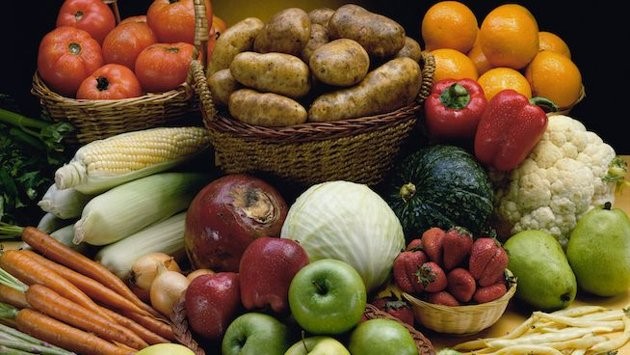By Andrew Meyers May 14, 2014 7:30 AM
.
Dark Foods
Darth Vader might have been onto something when he asked Luke Skywalker to “come to the dark side.” A healthy food that has a rich, dark color tends to have higher amounts of important nutrients and antioxidants. As an athlete, you should eat dark foods because they fight free radicals, which can cause muscle soreness, inflammation, fatigue and premature aging of cells.
Free radicals are produced during respiration. In a process called the citric acid cycle, cells take electrons from the sugars they burn and add them to oxygen to generate energy. Stray electrons generated during these reactions collide with other molecules, causing them to lose an electron from their outer shell, destroying the chemical bonds between molecules and creating free radicals. Swap light-colored foods like potatoes, white rice and iceberg lettuce for some of their darker colored counterparts to reap immune-boosting benefits and stay healthy throughout the season. Below I list some healthy dark foods and the benefits they can confer. Add as many as you can to your shopping list.
Fruit
1. Berries (blue, black, acacia): Polyphenols found in dark berries may help reduce cognitive decline in old age by cleaning up cells that impair brain function.
2. Cherries: Contain anthocyanin and flavonoids that may help reduce blood pressure and LDL cholesterol.
3. Cranberries: The purple skin contains anthocyanin, which protect cells from damage and heal already damaged cells.
4. Tomatoes: A good source of lycopene, an antioxidant that may protect cells from damage.
5. Prunes: They relax blood vessels and can lower LDL (bad cholesterol).
Vegetables
1. Broccoli: Contains isothiocynates (ITCs), which are important for detoxification.
2. Brussels sprouts: Can reduce your cancer risk.
3. Carrots: Contain beta-carotene and vitamins A, C and E, lutein, and selenium, which help prevent cancer, heart disease, high blood pressure and even depression.
4. Sweet Potatoes: Also contain beta-carotene, which reduces free radical production from exercise and protects against muscle cell damage from free radicals.
5. Beets: Promote eye health and help prevent cancer, diabetes and stroke.
6. Radishes: Contain isothiocyanates, which help activate the antioxidant enzyme glutathione, which has anticarcinogenic properties.
Leafy Greens
1. Spinach: Contains a high level of antioxidants, and just one cup provides all of your vitamin A and K for the day, as well as folate.
2. Romaine Lettuce: Contains manganese, which helps the body use superoxide dismutase, which promotes the breakdown of free radicals.
Grains/Beans
1. Black Rice: The bran hull contains high amounts of vitamin E, which enhances the immune system and protects cells from free radical damage.
2. Black Beans: Their dark skins are packed with bioflavonoids, potent plant-based nutrients that may protect against cancer.
3. Black Lentils: Lentils contain high levels of iron and soluble fiber, which may lower cholesterol and improve immune function.
4. Black Soybeans: Can reduce the risk of thrombosis, a type of blood clot that’s potentially
Nuts/Seeds
1. Walnuts: Contain Vitamin E, which helps with cell respiration by searching for free radicals during exercise, and protects against free radical muscle cell damage.
2. Almonds: Contain copper, which helps produce antioxidant enzyme superoxide dismutase.
3. Brazil Nuts: Contain selenium, which helps activate glutathione peroxidase enzyme, a protective effect against cellular damage from free radicals.
4. Flax Seeds: Contain alpha-linoleic acid, which helps it convert to an omega-3 fatty acid, which is an anti-inflammatory agent.